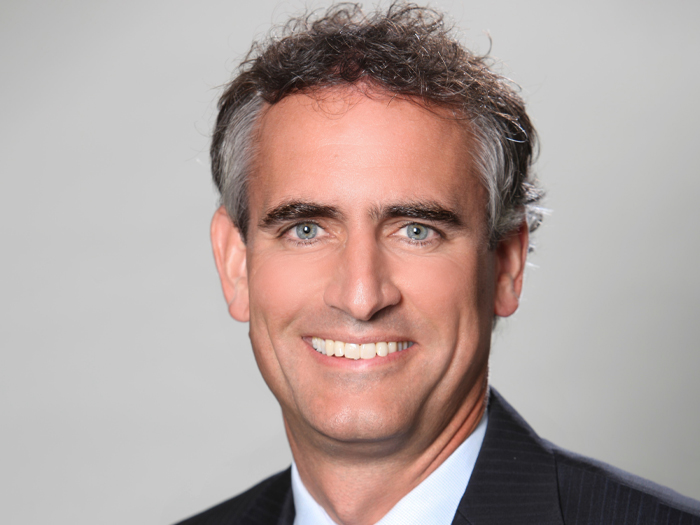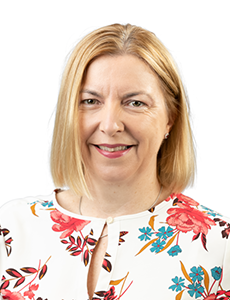11 Questions for Matthew Kramer, CEO of U.S. Insurance for Ascot

In March of 2021, Matthew Kramer was appointed CEO of U.S. insurance for Ascot.
Risk & Insurance connected with Kramer in March 2022, one full year into his role, to get his take on his goals and aspirations for the group he leads.
What follows is a transcription of that interview, edited for length and clarity.
Risk & Insurance: In the seat you’re in now, what’s getting your blood moving about the opportunities that you may have in the next year or so?
Matthew Kramer: I see opportunity in the challenges that we’re facing in the coming year, the changing face of risk, increasing volatility in the marketplace. I think it’s something that every specialty insurance carrier is talking about on a daily, if not an hourly basis.
Whether it be climate change, increased CAT activity, inflationary pressures, geopolitical upheaval, the list goes on, presenting challenges that I think Ascot is well positioned to showcase what we’re building.
We’ve got a 20-year history with Lloyd’s, building on that brand, building on that history with relatively no legacy issues here in the United States. It gives us an opportunity to play offense. And so, what does that mean?
It means that we’re on our front foot, it means we’re relentlessly focused on the quality of service that we’re bringing to our clients and our distribution partners. We’re focused on underwriting excellence, talent acquisition, product development, claims expertise and operations
Our mission, the purpose that we have here is building for resiliency and providing solutions for the market. So I think one of the biggest challenges, quite frankly, in those opportunities is the choreography of it all. Bringing it all together, properly scaling an A-rated company here in the United States, growing the specialty platform and addressing all of those needs to make us a relevant player in the marketplace. It’s a huge challenge, but we’re very much up for it.
R&I: When you think about specialty, can you say Matt, what particular sectors or risks you’ve got an appetite for?
MK: We are putting a lot of resources into our casualty units. They’re our most recent business units, E&S casualty, excess casualty were launched last year. There is still a lot of need in the marketplace for good strong capacity in both of those areas. So we’re really excited about that.
Workers’ comp of course, is our newest acquisition. [Ascot announced its acquisition of Mississippi-based AmFed in September 2021] Part of the casualty play for us is rounding out our product suite with workers’ comp.
We see that as an area where we can offer monoline, we can offer it together with some of our casualty products and then offer it in conjunction with our programs business. And so, an exciting endeavor there.
The other acquisition we made late last year was in surety. [Ascot U.S. acquired the Boston Indemnity Co. in July 2021] It’s more of a ground-up build for the surety operation, but again, that’s a new product for us that will be launched later on this year and into 2023.
We are relatively new in our evolution, so still in build and in growth mode, but seeing opportunity in a lot of different spots.
R&I: Can you dig into workers’ comp a little bit for us and just give us your view on what services the market really needs right now?
MK: The acquisition that we conducted late last year gives us an entry point into the southern United States. It gave us infrastructure; it gave us staff; it gave us systems; it gave us rating, and speed to market.
What we can do is methodically scale that across the United States. Workers’ comp remains in a soft market, where you’re still seeing workers’ comp rate decreases in the marketplace. Obviously, it’s been a favorable product for a lot of carriers. We’re optimistic about the future of workers’ comp and the complement it brings to our product suite.
We’ve got a nice following of middle market clients and expertise in certain classifications that we’re going to be looking to service. Construction, for an example, is an area where we have expertise. It dovetails nicely with where we’re offering our casualty products.
R&I: I was just curious for starters, Matt, how big is the team in the Unites States at this point?
MK: In the U.S., we’re right around 350 employees. We’ve onboarded roughly 120 of those in the past year.
It’s a nice stat to be able to emphasize; bringing in many new colleagues from different backgrounds, different skill sets, to encourage diverse thinking, to encourage collaboration. Everybody’s contributing and everybody has a voice.
R&I: The issue everybody’s thinking about it is talent retention and recruitment. Can you tell us, with the onboarding that you’ve conducted, Matt, what’s the spectrum of backgrounds that you are drawing from?
MK: We’ve done a really nice job of bringing in individuals from other specialty companies that know how to run a specialty organization. However, we’ve also looked outside the specialty P&C marketplace, and one thing that shocks me is the diversity of backgrounds in those we’ve hired — having insurance experience certainly isn’t a pre-requisite to working and succeeding at Ascot.
We’ve done a phenomenal job of recruiting top-tier talent. For Ascot, our culture is everything. Without that, I think there’s no way we’d be able to achieve the success that we’ve already achieved. It’s key to who we’ve brought into the organization, and it’s key to who we will be recruiting into the future.
They all believe in the Ascot mission. They all believe in what we call “the Ascot way,” which, simply put, is a collaborative culture; it’s an inclusive culture; it’s an entrepreneurial spirit. And we’re focused on finding a better way.
We are also investing significantly in recruiting out of college and business schools. Last year, we instituted our first internship program with 14 participants. This year, we have 22.
Additionally, this year will be our inaugural year for our training and development program, an early career program. And we’ve got seven new associates joining us.
R&I: As a leader within the organization, what about that culture works for you?
MK: What I’ve been really surprised, or excited about is the culture that was already here before I arrived and how strong it’s become in the past year.
We’ve established a culture council. We’re involving a lot of our employees in the vision and the strategies of the company. We’re investing in employee networks, focusing on diversity, equity, and inclusion, and ESG initiatives.
And so, again, where we are in our evolution to be able to do that from the beginning stages, I think is hugely impactful. It’s something that I think gets a lot of our folks excited about, especially as we’re coming back into the office.
R&I: You mentioned not having legacy issues. As you try to grow in this market, I’m sure that applies to legacy underwriting issues and perhaps even legacy technology issues. Speak to either side of it if you want. But I guess I’d start with the tech piece. That’s such a big deal and having legacy issues can be really burdensome. What does that dynamic look like for you?
MK: I think we’re really fortunate that we don’t have a patchwork of systems that have been put together over many years through many acquisitions. We’ve got a really unique opportunity to build and use technology as a significant differentiator in the specialty marketplace.
We pride ourselves on being client, risk and tech-centric. It is our mantra. We believe focusing on the clients and making proper risk selection is part of our DNA.
I think what takes time, energy, and investments are the initiatives around technology and having that permeate everything we do as an organization. We have a technology roadmap with client-facing technologies such as broker portals, or API connectivity, as well as enterprise operational plans.
It’s a multi-year journey that we have a plan in place for a full enterprise solution. But it comes back to the notion of choreography, of bringing it all together to make sure it’s embedded within our DNA and enabling proper risk selection, customer service, data collection, and speed and efficiency. It’s front of mind for us. We talk about it all the time.
R&I: Are there any partnerships you’ve got going with tech vendors or are there technology companies that you are considering partnering with?
MK: We’ve partnered with a number of providers with regard to our on-going resiliency in the marketplace and helping our underwriters provide solutions in the market. Additionally, we’re constantly evaluating opportunities with Insurtechs and what they can bring to us to complement our existing businesses.
[We] recently partnered with Coalition, a leading Insurtech MGA, which will help offer our primary cyber product in a much broader and more efficient fashion.
R&I: You mentioned the volatility, all the challenges that are out there, Matt. I guess we would ask you, from your seat, what are you seeing? What are your clients and insurance coming to you with that’s really bothering them, or the risk that they really need help grappling with.
MK: I’d be remiss if I didn’t talk about the obvious things impacting, not only the insurance industry, but the world these days: obviously, cyber preparedness, geopolitical unrest, and economic inflation.
These are all things that our clients are talking about. These are all things that we’re trying to solve for. Additionally, I would advise my clients and our brokers is they should be hyper-focused on who they’re doing business with in the insurance industry. Not only from a counterparty credit risk standpoint, but about what is the insurance company’s vision?
Where are they going to be in a couple of years? Are they looking for a quick out or are they really building for resiliency?
Maybe it’s a little bit self-serving, but I think we have a unique niche that we’ve carved out for ourselves. I have a lot of respect for many of those whom I compete against, but are those company’s investing in talent or are they investing in technology, are they building for resilience?
We’re not looking to be all things to all partners. We occupy a specific niche in the industry and we’re looking for longstanding partnerships.
R&I: In your own words, what experiences in this industry really formed you and led you to where you are today, can you say?
MK: Without a doubt, the mentors that I’ve had throughout my career, past and present, have encouraged and invested in my development and that’s led to the most valuable experiences of my career.
I’ve been fortunate enough to raise my hand for opportunities, and I’ve been offered opportunities that have taken me out of my comfort zone.
Beginning in financial lines, as a D&O underwriter, being afforded the opportunities to learn E&O, cyber, casualty, property, as well as new distribution channels into wholesale and delegated authority; it’s all shaped my perspective.
It’s all encouraged constant learning. But without a doubt, without the support of those mentors, those experiences may not have materialized and my career might have taken a different path.
R&I: Matt, is there anything we didn’t ask you about that you thought you want to get across to our readers, if you consider the company or your prospects?
MK: The overwhelming message that I want to get across is that we really believe in what we’re doing. We are mission-centric to be the best in the specific areas that we’ve chosen to compete.
We are working hard every, single day to try to solve the problems in an ever-changing and volatile risk environment and we’re building for the future. &










